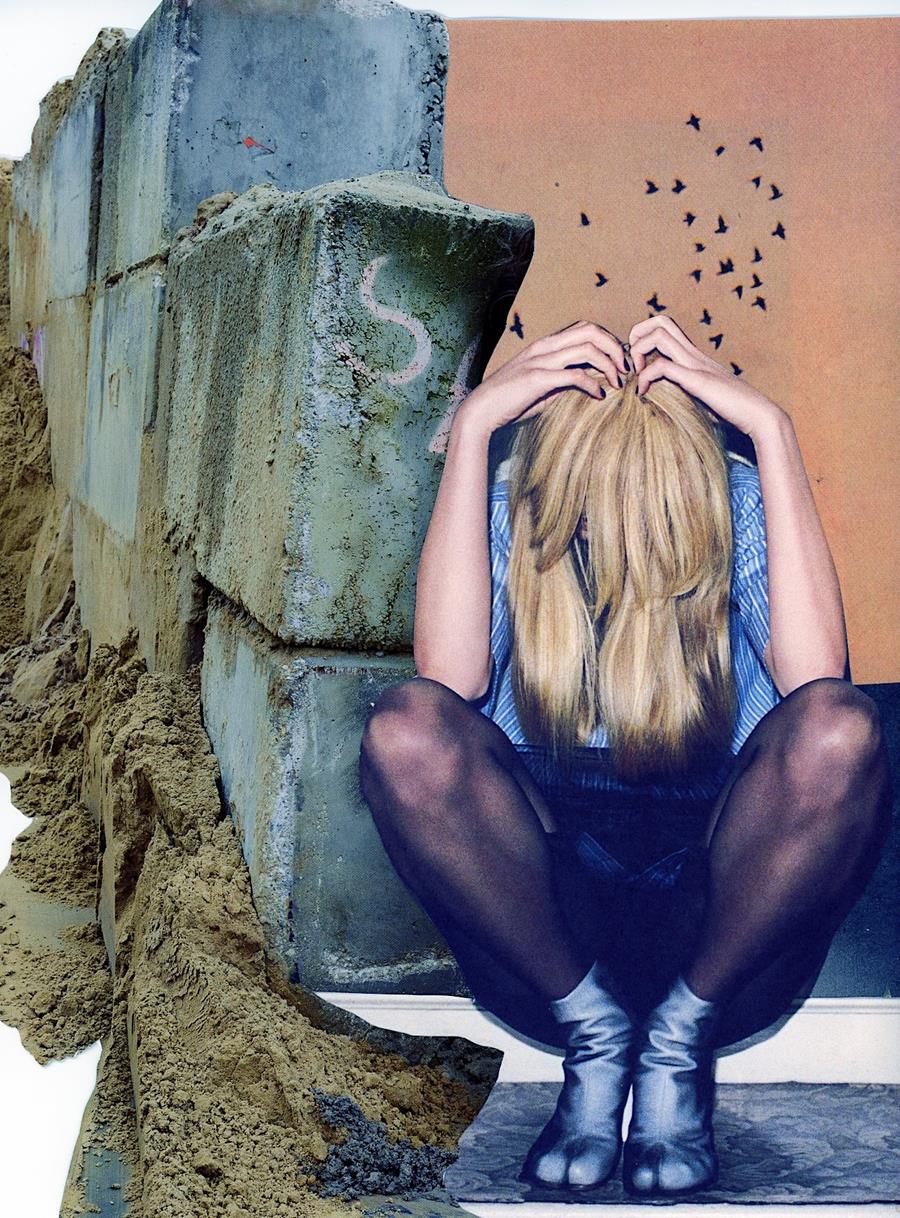
Analog collage on paper
12 x 10 in.
Tracy von Ahsen
In the work of Tracy von Ahsen, the female body becomes a site of transformation, clothed in glamour, tension, and a mysterious mood. Her collages exist between realities, where fashion fragments into dreamy landscapes and a soft pulse animates every shadow. There’s a sense of ritual in the cuts she performs, a subtle but urgent pose, as if each collage is reaching for something just out of frame.
In the Words of the Artist
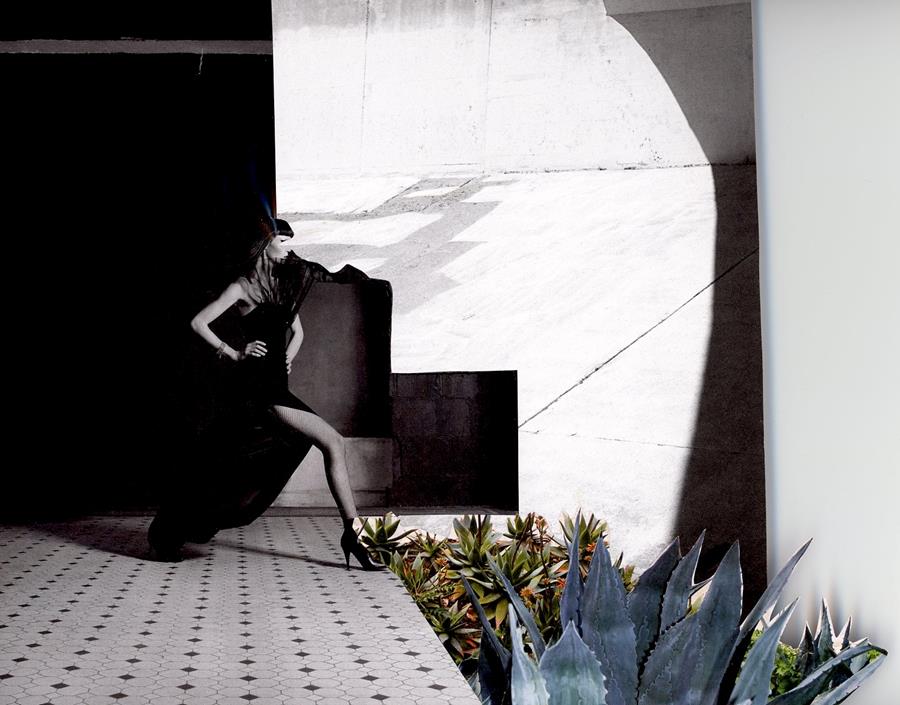
Analog collage on paper
9 x 10 in.
I spend a lot of time in the Lower East Side and SoHo, where I’m constantly fed by street style, graffiti, and the rhythm of the city itself. New York is part of my process. The city reflects my inner terrain—stylistically, emotionally, and in the way I move through it vibrationally.
My collage process is ritualistic and deeply intuitive. I work with fashion magazines, entering a challenging state where I let the images pull me. I don’t force compositions—they reveal themselves. Once a theme starts to emerge, I ride that wave. As I source, I fall into this rhythm of synchronicity, finding exactly what I need to tell the story I was chosen to tell.
I think in personal frequency—connecting with other image-makers through a shared visual pulse and transforming it into something that feels entirely my own. In a way, I’m also sending out my own vibration—calling in the imagery and emotion that resonate with the story that wants to be told. My process might be intuitive, but it’s also exacting. I'm drawn to color palettes that feel emotionally charged—tones that vibrate at the right frequency to carry the mood of the piece. My choices around shape and spatial tension don’t come from technique, but from a deep intuition I’ve honed through the act of making.
These stories are sacred, and I feel in service to the work that continues to call me deeper into alignment. As my practice continues, I have begun printing on fabrics and canvas to see how these compositions can continue to evolve past the paper.
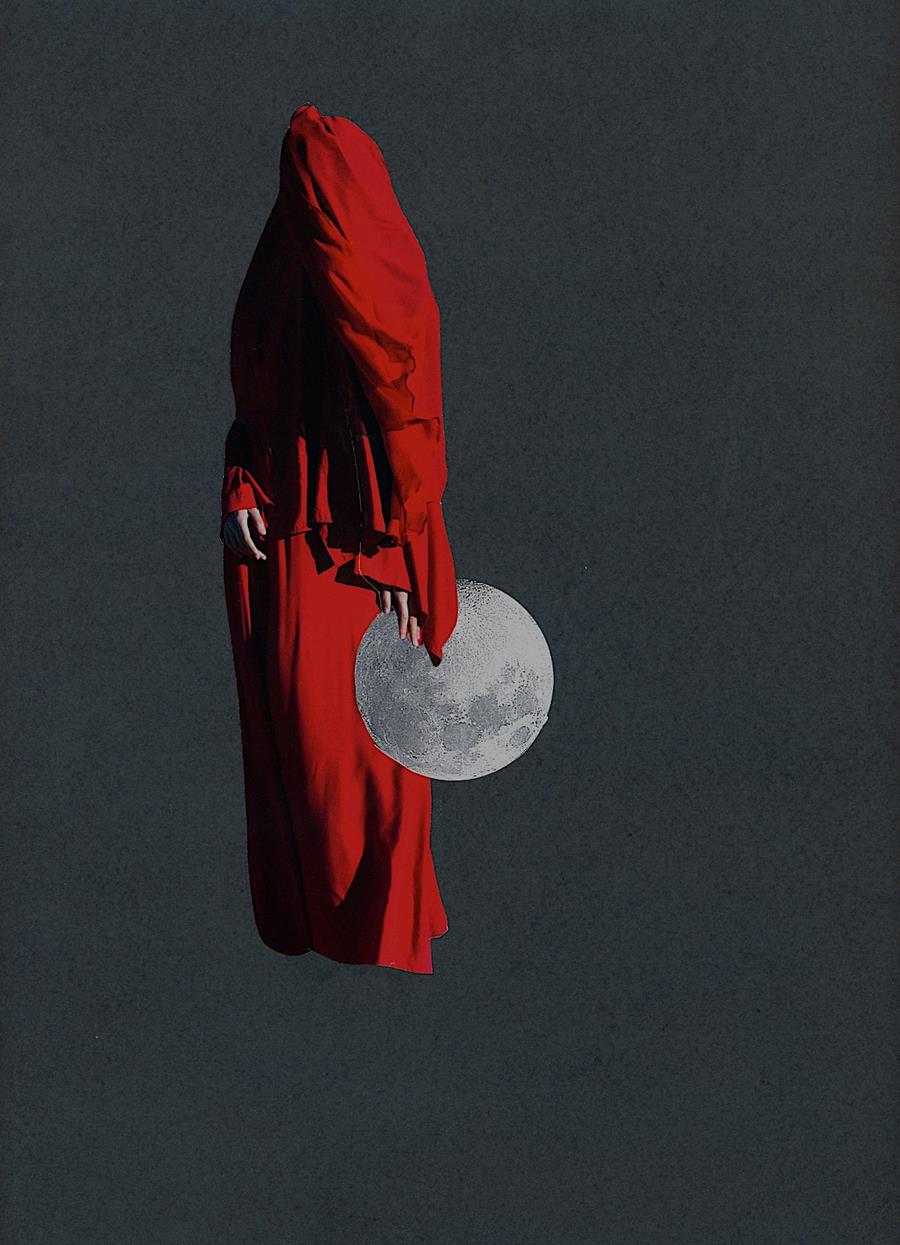
Analog collage on paper
8 x 10 in.
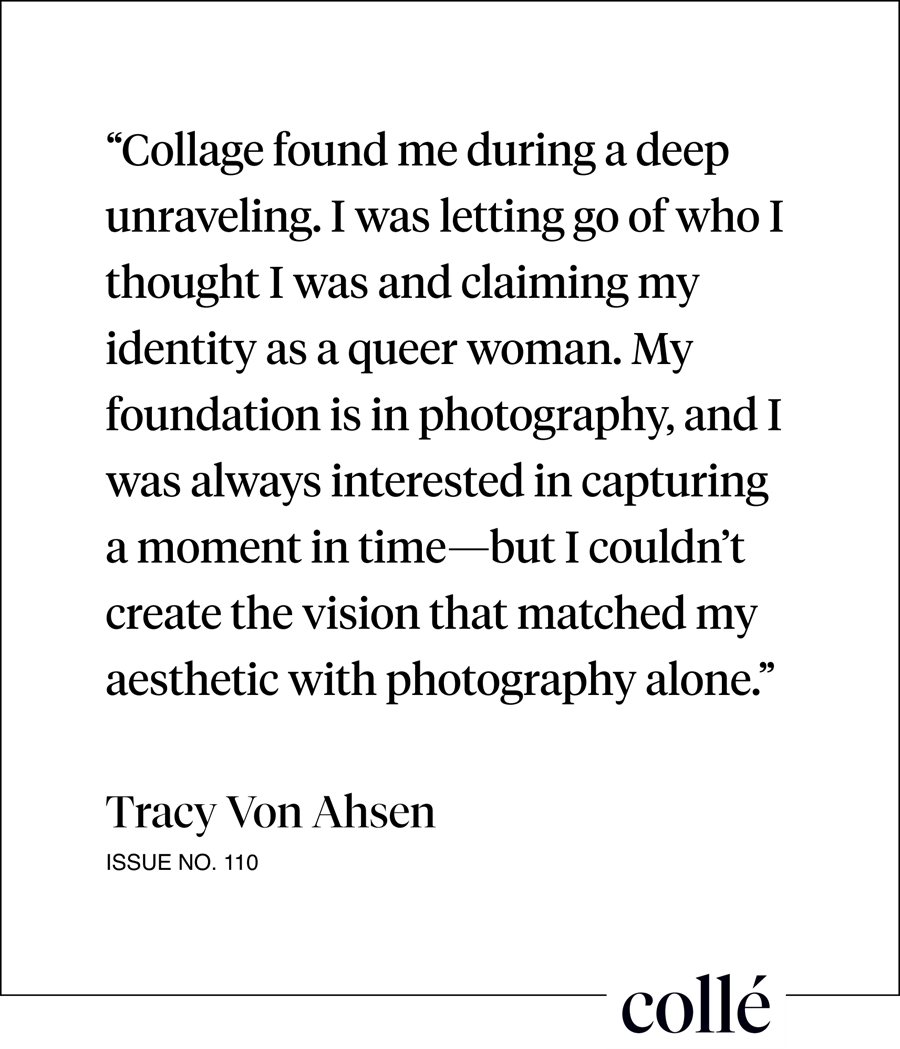
I usually start, in my studio, by shooting a few Polaroids—self-portraits that let me slip into that parallel reality feeling, like cracking open the emotional door I’ll be working through. Music plays a huge role—it’s both inspiration and companion in the story I’m about to tell.
Then I pull out a newer magazine that’s been tugging at me. Something about fresh imagery lights the spark. There’s a special kind of thrill when I’m carrying it home, especially if it’s still sealed in plastic. It feels like opening a CD in the ’90s: mysterious, full of possibility.
As I start to go through the pages, I wait until I feel that hook. It stops me. Even if I don’t fully understand why, I trust it and start building around it. I move through multiple arrangements—not chasing the “right” one, but listening. Letting my inner knowing shape what wants to come through instead of pushing toward a fixed outcome. That’s when the piece reveals its power. The strongest works always carry something I couldn’t have planned, and that feeling keeps me chasing it.
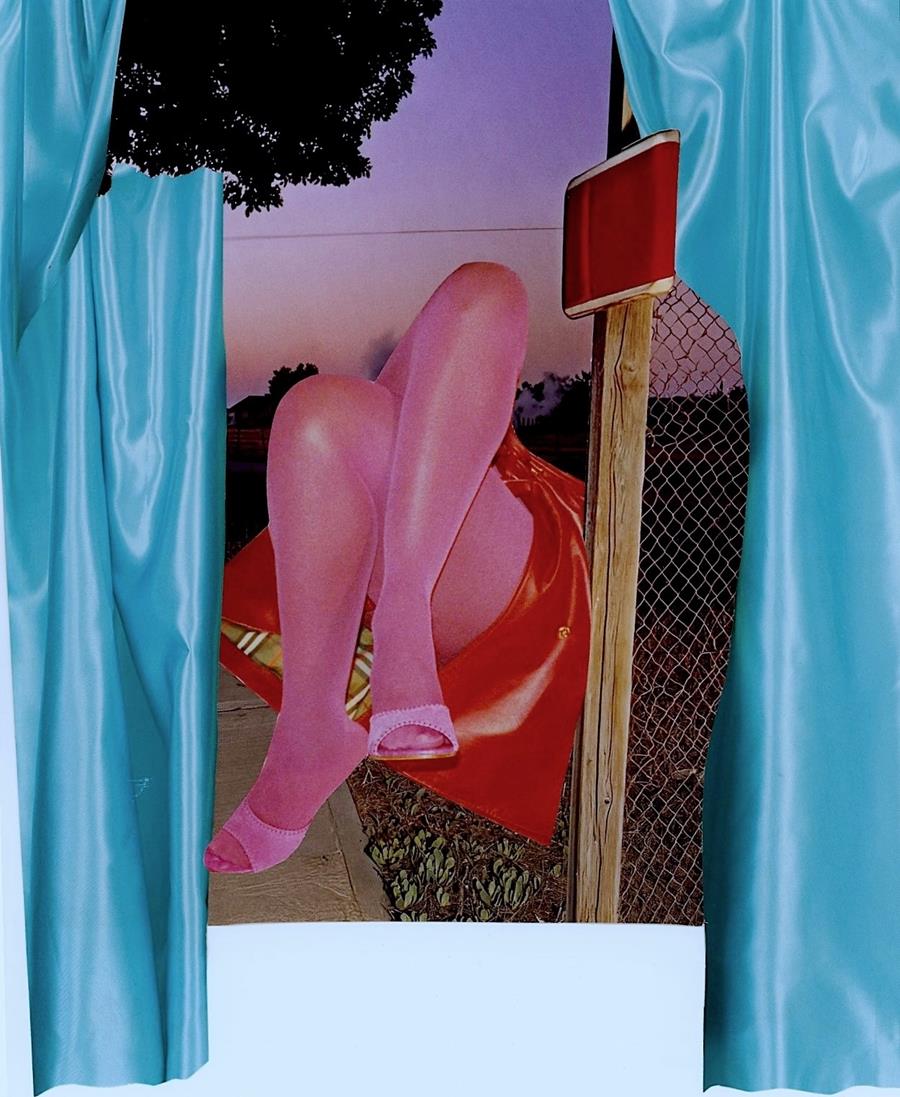
Analog collage on paper
10 x 8 in.
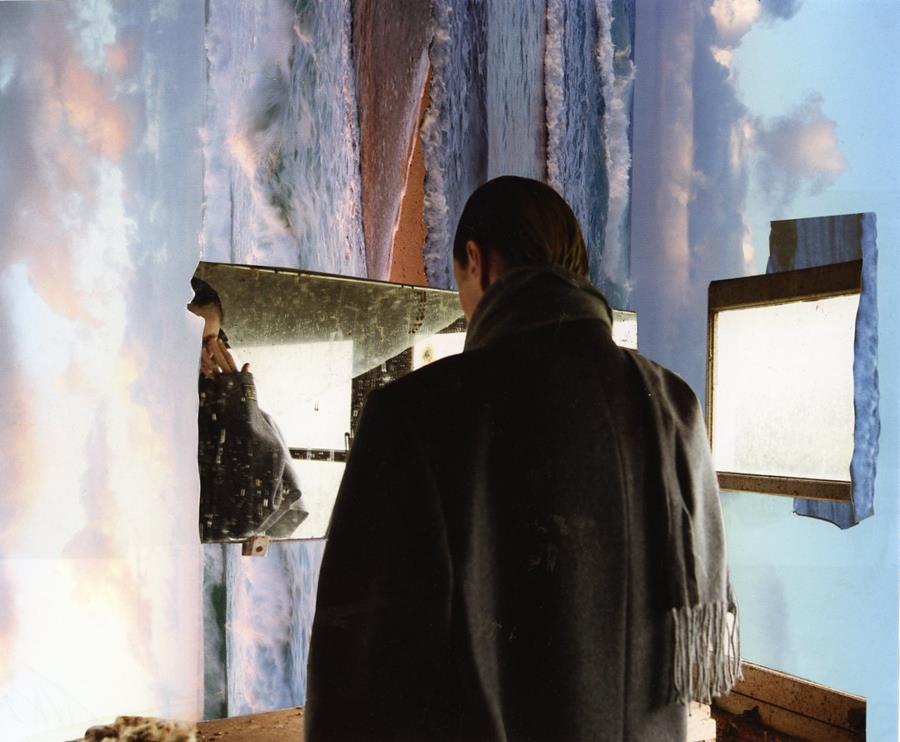
Analog collage on paper
7.5 x 10 in.
Collage found me during a deep unraveling. I was letting go of who I thought I was and claiming my identity as a queer woman. My foundation is in photography, and I was always interested in capturing a moment in time, but I couldn’t create the vision that matched my aesthetic with photography alone. I needed a medium that could hold multiplicity: fragmentation, memory, archetypes.
My collages are thresholds, right before or after a frequency jump, a life-changing event, or that frozen second when you don’t know your next step. As I went deeper into plant medicine work, I started feeling my Higher Self come forward in the studio. The ego got quieter. The collages became a teacher and healer for me and my collectors, encoded with the energy of transformation. Collage became the visual language for everything I couldn’t yet say.
It also mirrors how I move through life: working with limitations, solving for the missing piece. Sometimes the perfect image is torn or incomplete, and I have to pivot. Those gaps, those constraints, end up becoming the soul of the work. And it continues to guide me, each piece a glimpse into my subconscious mind. The tactile nature of analog collage calms my nervous system and connects me back to who I am at my core. The blade, the glue, the paper, they all slow me down to return me to presence.
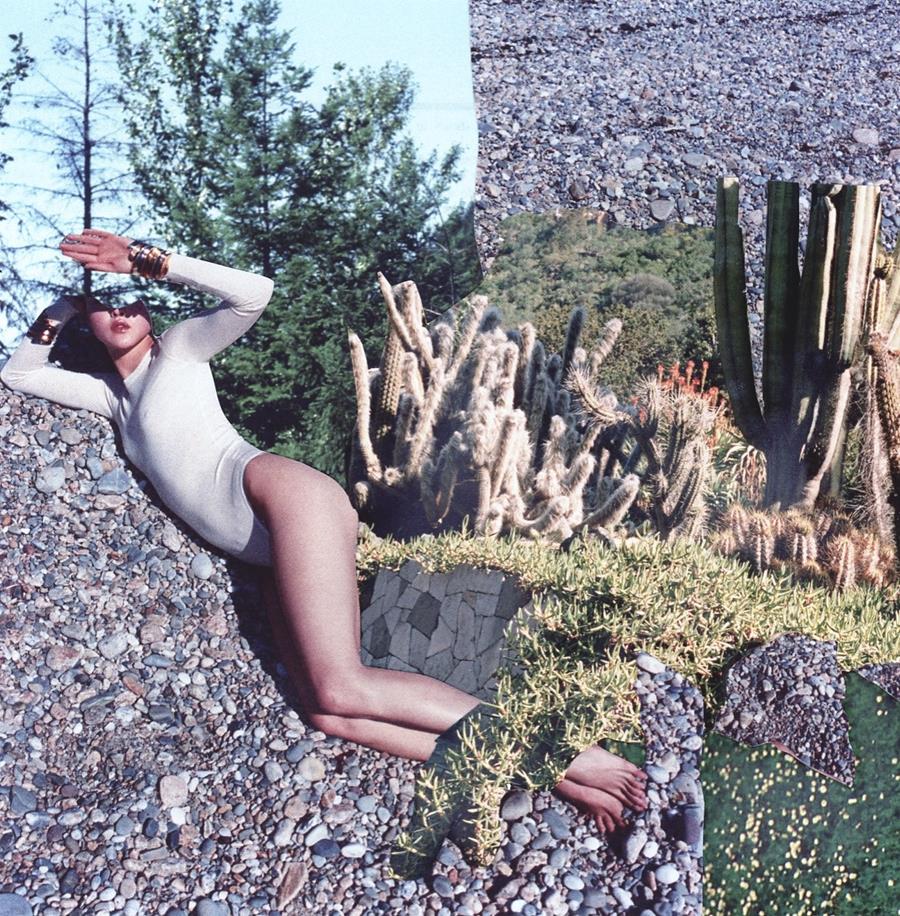
Analog collage on paper
8 x 8 in.
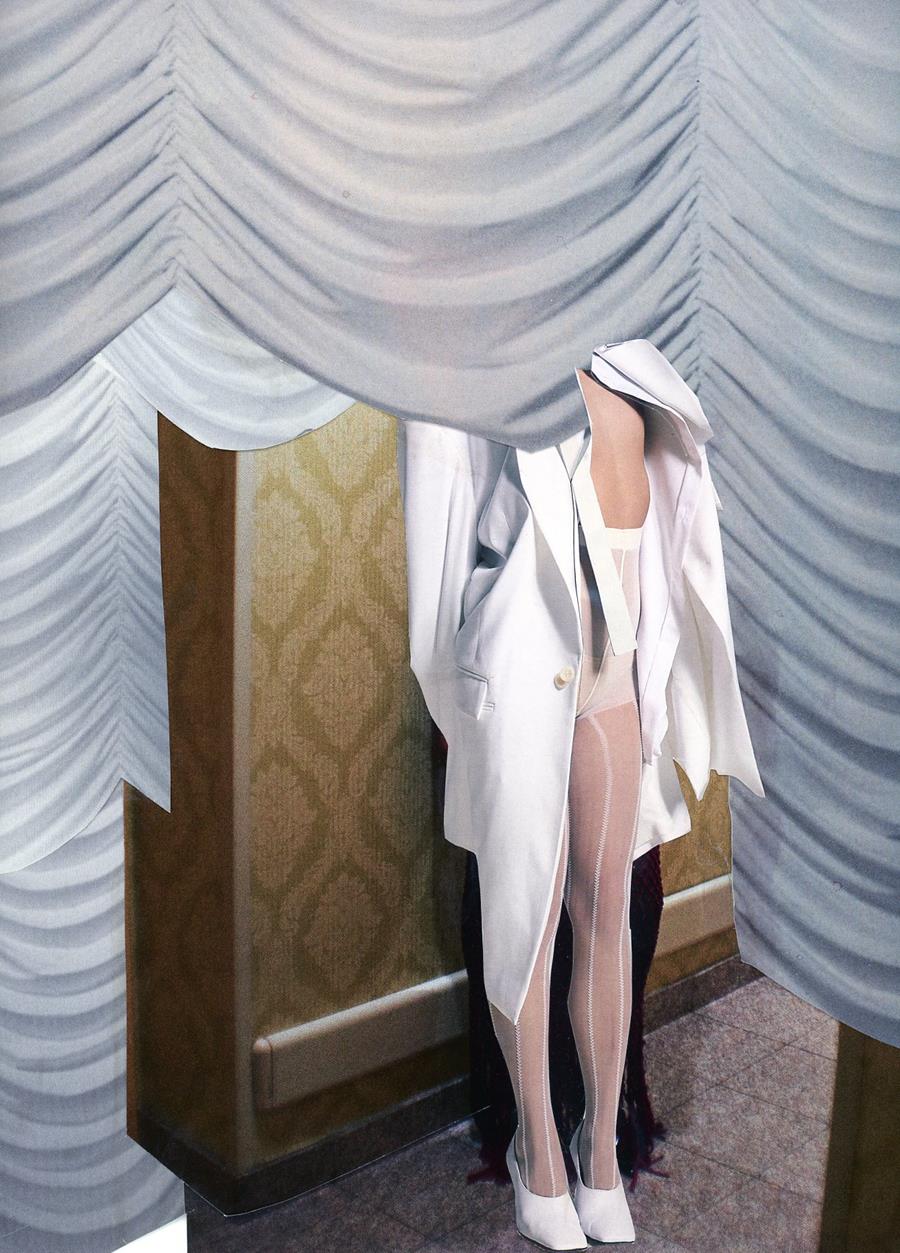
Analog collage on paper
12 x 10 in.

About the Artist
Tracy von Ahsen (b. 1981, Long Island, NY) is a New York City–based artist whose work collages presence, memory, and self-reinvention. After earning a photography degree from the Fashion Institute of Technology and living at the iconic Chelsea Hotel, she transitioned from photography to analog collage — cutting, layering, and reimagining symbols of identity, femininity, and spirituality.
Von Ahsen’s work is shaped by personal transformation: her navigation through addiction, recovery, queer identity, and spiritual awakening. Her studies with monks in India, ceremonies in Peru’s Sacred Valley, and years immersed in New York’s downtown art scene form the undercurrent of her practice.
Fusing fashion iconography, cultural residue, and mystical storytelling, her pieces channel the surreal textures of city life while inviting a quieter dialogue about the nature of reality and personal mythmaking. By obscuring the face, von Ahsen dissolves the ego. Her figures become archetypes—vessels the soul moves through, not identities to cling to. She has exhibited work in NYC at Amos Eno Gallery, Van Der Plas Gallery, the Leslie-Lohman Museum, and Prince Street Project Space. She continues to create from her studio in the East Village.
For Your Viewing Pleasure
What to watch, read, and experience, as curated by the Collé team.

JESSICA DRENK is an American artist raised in Montana, where she developed an appreciation for the natural world that remains an important inspiration to her artwork today. Tactile and textural, her sculptures highlight the chaos and beauty that can be found in simple materials. Her work is a process driven exploration of material, often investigating the intersection between the man made and the natural.

OLIVER JEFFERS is an internationally acclaimed artist, illustrator, and author, known for his picture books and fine art. He was born in Australia, raised in Northern Ireland, and currently lives and works between Belfast and Brooklyn.
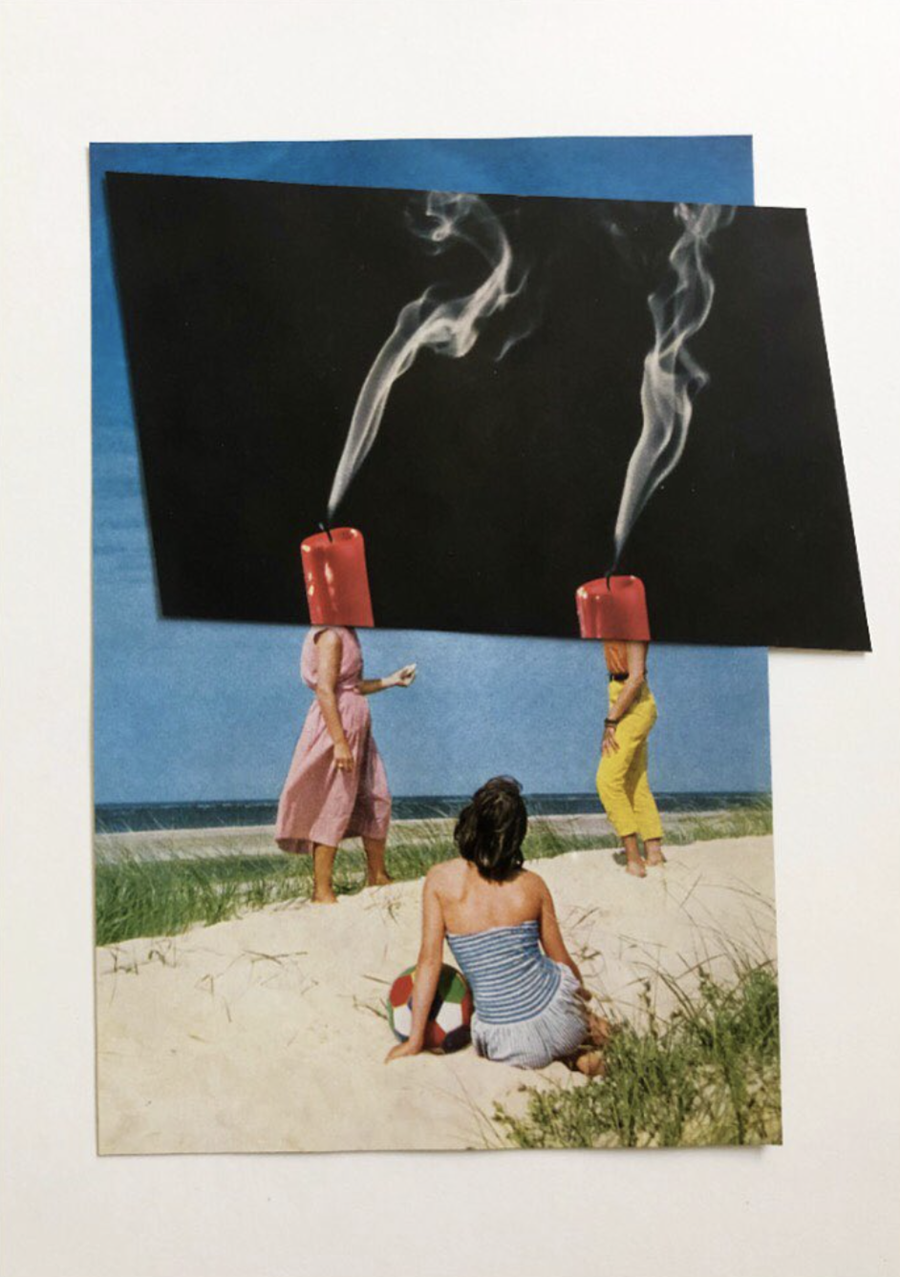
DENNIS BUSCH (1971) creates chaos out of the ordinary and reassembles it into surrealist fragments of a parallel world. His works burst with movement. Figures, shapes, and forms explode with centrifugal force in the artist’s handmade works on paper.
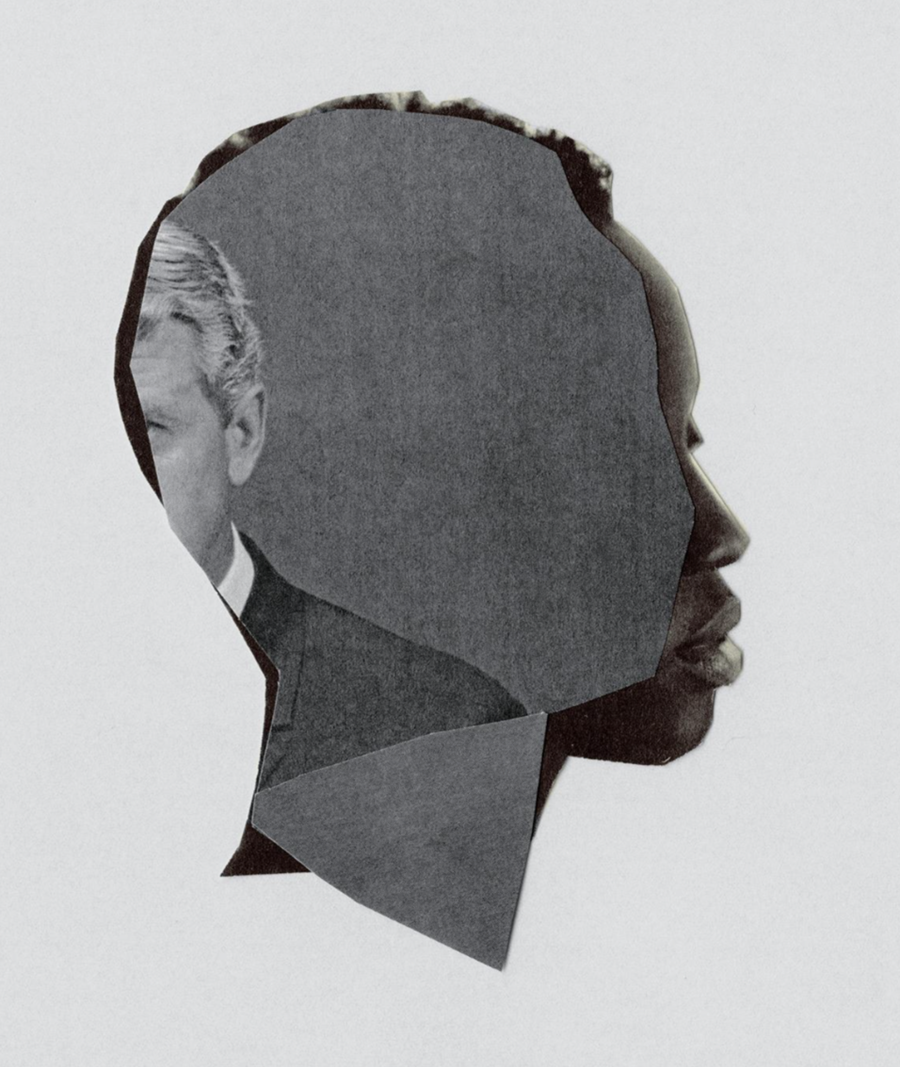
NAJEEBAH AL-GHADBAN is a designer, art director, and collage-artist from Kuwait, based in San Francisco. She received a BFA and MFA in Design from the School of Visual Arts in New York City.
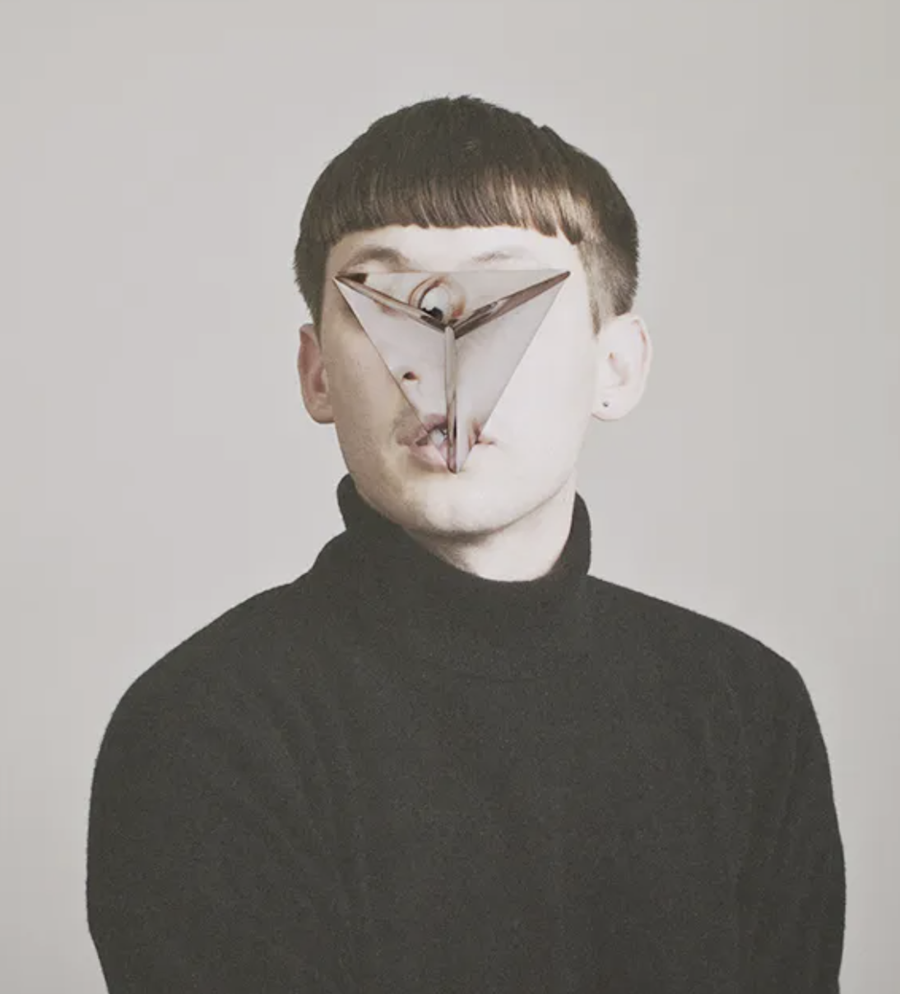
ALMA HASER (b.1989) is a German-born portrait photographer living in the United Kingdom. She uses paper-folding techniques, collage and mixed media to create layers, blurring the distinctions between two-dimensional and three-dimensional imagery.
Out and About
What to watch, read, and experience, as curated by the Collé team.
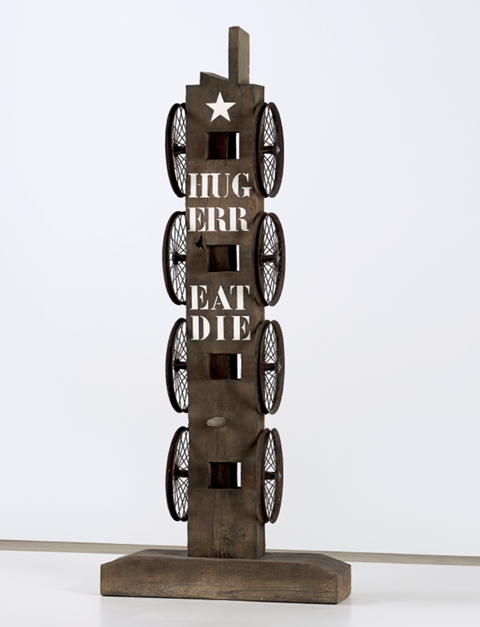
▼ VISIT
Robert Indiana: The American Dream
This exhibition features seminal paintings and sculptures by Robert Indiana, spanning from the early 1960s through the later decades of his career. On view at Pace Gallery, 540 West 25th Street in New York, through August 15.
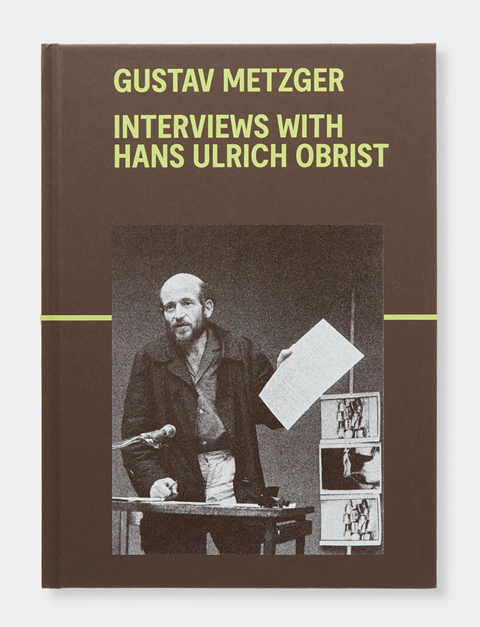
▼ READ
Gustav Metzger: Interviews with Hans Ulrich Obrist
A visionary artist and radical thinker, Gustav Metzger used his work to challenge conventional art and confront political and ecological crises. In conversations with curator Hans Ulrich Obrist, he reflects on his life, from his Kindertransport arrival in England to his pioneering role in computer art and the Destruction in Art Symposium. This richly illustrated book reveals Metzger’s belief in art as a force for change and his enduring call: “We must become idealists or die.”
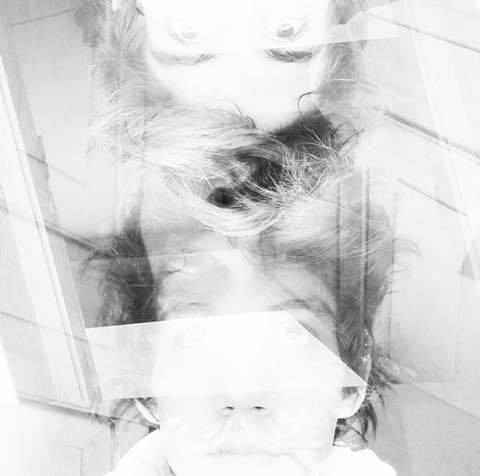
▼ LISTEN
Isolation by Arik Lau
This album puts bedroom pop in a cloak, where sparse arrangements and hushed vocals mirror a mood of solitude. The production is minimal, like a voice memo echoing through an empty apartment at midnight.
